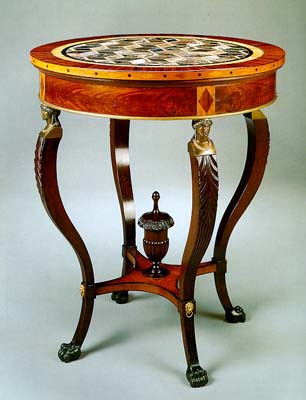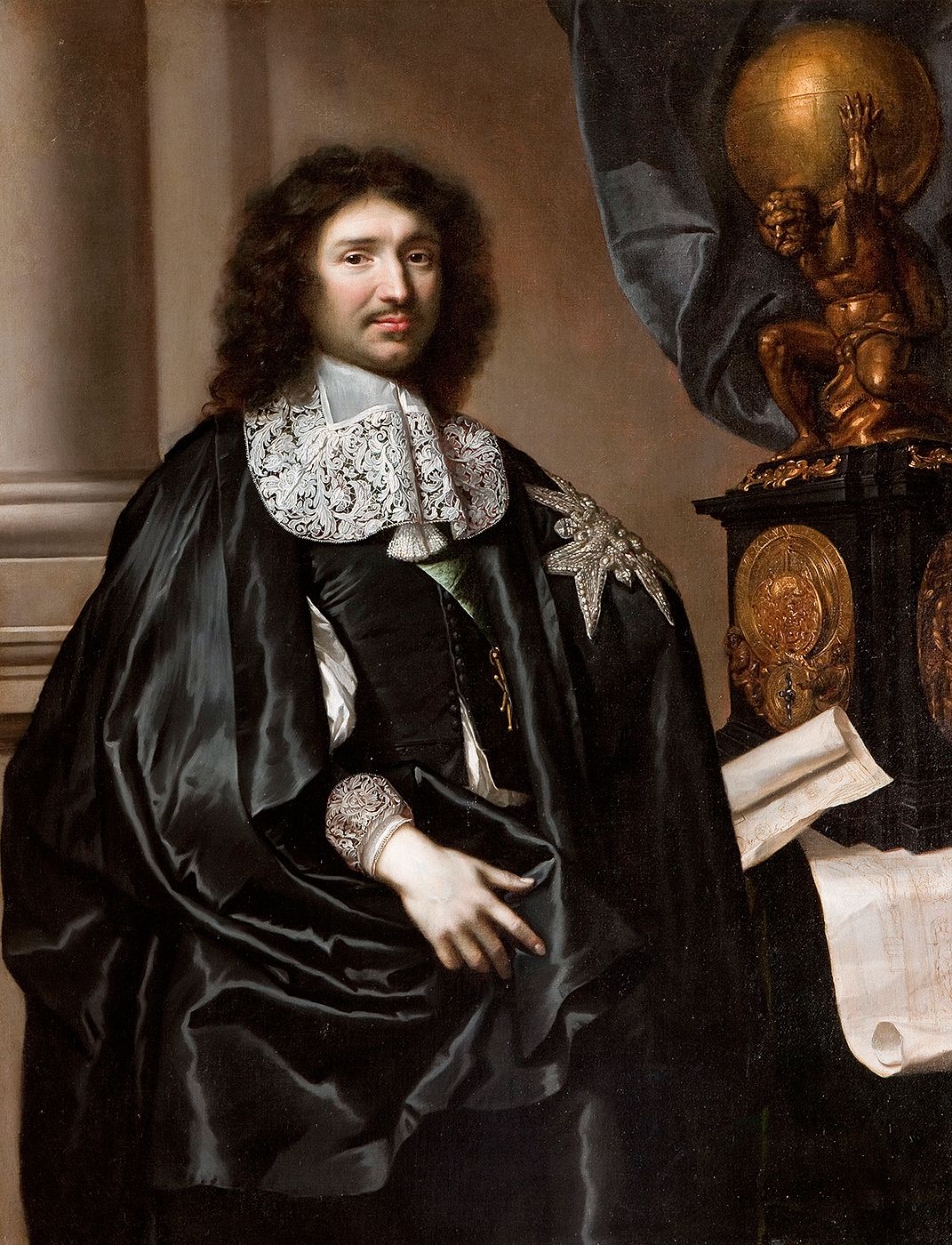|
Hall Of Mirrors (Palace Of Versailles)
The Hall of Mirrors (french: Grande Galerie, Galerie des Glaces, Galerie de Louis XIV) is a grand Baroque style gallery and one of the most emblematic rooms in the royal Palace of Versailles near Paris, France. The grandiose ensemble of the hall and its adjoining salons was intended to illustrate the power of the absolutist monarch Louis XIV. Located on the first floor (''piano nobile'') of the palace's central body, it faces west towards the Palace Gardens. The Hall of Mirrors has been the scene of events of great historic significance, including the Proclamation of the German Empire and the signing of the Treaty of Versailles. Cultural and historical background Construction In 1623 King Louis XIII ordered the construction of a modest two-story hunting lodge at Versailles, which he soon enlarged to a château from 1631 to 1634. His son Louis XIV declared the site his future permanent residence in 1661 and ordered the transformation into an extensive residence in seve ... [...More Info...] [...Related Items...] OR: [Wikipedia] [Google] [Baidu] |
Corps De Logis
In architecture, a ''corps de logis'' () is the principal block of a large, (usually classical), mansion or palace. It contains the principal rooms, state apartments and an entry.Curl, James Stevens (2006). ''Oxford Dictionary of Architecture and Landscape Architecture'', 2nd edition. Oxford and New York: Oxford University Press, p. 204. . The grandest and finest rooms are often on the first floor above the ground level: this floor is the ''piano nobile''. The ''corps de logis'' is usually flanked by lower secondary wings, such as the ''barchesse'' of Venetian villas. When the secondary wings form a three sided courtyard, the courtyard is known as the ''cour d'honneur''. Examples of a ''corps de logis'' can be found in many of the most notable Classical Era buildings of Europe including the Palace of Versailles, Blenheim Palace, and the Palazzo Pitti. In France, the principal block of medieval castles and manor house A manor house was historically the main residenc ... [...More Info...] [...Related Items...] OR: [Wikipedia] [Google] [Baidu] |
Fleur-de-lis
The fleur-de-lis, also spelled fleur-de-lys (plural ''fleurs-de-lis'' or ''fleurs-de-lys''), is a lily (in French, and mean 'flower' and 'lily' respectively) that is used as a decorative design or symbol. The fleur-de-lis has been used in the heraldry of numerous European nations, but is particularly associated with France, notably during its monarchical period. The fleur-de-lis became "at one and the same time, religious, political, dynastic, artistic, emblematic, and symbolic," especially in French heraldry. The fleur-de-lis has been used by French royalty and throughout history to represent saints of France. In particular, the Virgin Mary and Saint Joseph are often depicted with a lily. The fleur-de-lis is represented in Unicode at in the Miscellaneous Symbols block. Origin The ''fleur de lis'' is widely thought to be a stylized version of the species '' Iris pseudacorus'', or '' Iris florentina''.Stefan Buczacki However, the lily (genus lilium, family Liliaceae) and ... [...More Info...] [...Related Items...] OR: [Wikipedia] [Google] [Baidu] |
Rouge De Rance
{{Short description, Red limestone from Rance, Belgium Rouge de Rance (Red of Rance) is a Devonian red reef limestone from the town of Rance in the province of Hainaut (Wallonia, Belgium). The red "marble" of Rance in the Belgian province of Hainaut knew a large popularity as a prestigious building material for decorative use. Although it was exploited since Roman Antiquity it became most renowned since the 17th century because of its prolific use in the Royal Chateau of Versailles built for the French king Louis XIV. Large quantities were used for the most prestigious parts of the building, including the interior wall decoration of the "Galerie des Glaces" (Hall of Mirrors) and the columns of the main portico on the "Cour des Marbres" (Marble Courtyard). To satisfy the vast demand needed for Versailles and other French royal residences a new quarry was opened and subsequently named "Trou de Versailles" (hole of Versailles). Since the 18th century "Rouge de Rance" was also po ... [...More Info...] [...Related Items...] OR: [Wikipedia] [Google] [Baidu] |
Capital (architecture)
In architecture the capital (from the Latin ''caput'', or "head") or chapiter forms the topmost member of a column (or a pilaster). It mediates between the column and the load thrusting down upon it, broadening the area of the column's supporting surface. The capital, projecting on each side as it rises to support the abacus, joins the usually square abacus and the usually circular shaft of the column. The capital may be convex, as in the Doric order; concave, as in the inverted bell of the Corinthian order; or scrolling out, as in the Ionic order. These form the three principal types on which all capitals in the classical tradition are based. The Composite order established in the 16th century on a hint from the Arch of Titus, adds Ionic volutes to Corinthian acanthus leaves. From the highly visible position it occupies in all colonnaded monumental buildings, the capital is often selected for ornamentation; and is often the clearest indicator of the architectu ... [...More Info...] [...Related Items...] OR: [Wikipedia] [Google] [Baidu] |
Nine Years' War
The Nine Years' War (1688–1697), often called the War of the Grand Alliance or the War of the League of Augsburg, was a conflict between France and a European coalition which mainly included the Holy Roman Empire (led by the Habsburg monarchy), the Dutch Republic, England, Spain, Savoy, Sweden and Portugal. Although not the first European war to spill over to Europe's overseas colonies, the events of the war spread to such far away places as the Americas, India, and West Africa. It is for this reason that it is sometimes considered the first world war. The conflict encompassed the Glorious Revolution in England, where William of Orange deposed the unpopular James VII and II and subsequently struggled against him for control of Scotland and Ireland, and a campaign in colonial North America between French and English settlers and their respective Native American allies. Louis XIV of France had emerged from the Franco-Dutch War in 1678 as the most powerful monarch in Eu ... [...More Info...] [...Related Items...] OR: [Wikipedia] [Google] [Baidu] |
Guéridon
A guéridon is a small table supported by one or more columns, or sculptural human or mythological figures, often with a circular top. The guéridon originated in France towards the middle of the 17th century. The supports for early guéridons were often modeled on ancient Egyptian and Greek as well as various African human traditional figures (inspired by caryatids). While often serving humble purposes, such as to hold a candlestick or vase, the guéridon could be a high-style decorative piece of court furniture. By the time of Louis XIV's death in 1715, there were several hundred guéridons at Versailles The Palace of Versailles ( ; french: Château de Versailles ) is a former royal residence built by King Louis XIV located in Versailles, about west of Paris, France. The palace is owned by the French Republic and since 1995 has been managed, ..., and within a generation they had taken on a nearly endless number of forms: columns, tripods, termini and mythological figures ... [...More Info...] [...Related Items...] OR: [Wikipedia] [Google] [Baidu] |
Venetian Republic
The Republic of Venice ( vec, Repùblega de Venèsia) or Venetian Republic ( vec, Repùblega Vèneta, links=no), traditionally known as La Serenissima ( en, Most Serene Republic of Venice, italics=yes; vec, Serenìsima Repùblega de Venèsia, links=no), was a sovereign state and Maritime republics, maritime republic in parts of present-day Italy (mainly Northern Italy, northeastern Italy) that existed for 1100 years from AD 697 until AD 1797. Centered on the Venetian Lagoon, lagoon communities of the prosperous city of Venice, it incorporated numerous Stato da Màr, overseas possessions in modern Croatia, Slovenia, Montenegro, Greece, Albania and Cyprus. The republic grew into a Economic history of Venice, trading power during the Middle Ages and strengthened this position during the Renaissance. Citizens spoke the still-surviving Venetian language, although publishing in (Florentine) Italian became the norm during the Renaissance. In its early years, it prospered on the salt ... [...More Info...] [...Related Items...] OR: [Wikipedia] [Google] [Baidu] |
Jean-Baptiste Colbert
Jean-Baptiste Colbert (; 29 August 1619 – 6 September 1683) was a French statesman who served as First Minister of State from 1661 until his death in 1683 under the rule of King Louis XIV. His lasting impact on the organization of the country's politics and markets, known as Colbertism, a doctrine often characterized as a variant of mercantilism, earned him the nickname ''le Grand Colbert'' (; "the Great Colbert"). A native of Reims, he was appointed Intendant of Finances on 4 May 1661. Colbert took over as Controller-General of Finances, a newly elevated position, in the aftermath of the arrest of Nicolas Fouquet for embezzlement, an event that led to the abolishment of the office of Superintendent of Finances. He worked to develop the domestic economy by raising tariffs and encouraging major public works projects, as well as to ensure that the French East India Company had access to foreign markets, so that they could always obtain coffee, cotton, dyewoods, fur, pepper, ... [...More Info...] [...Related Items...] OR: [Wikipedia] [Google] [Baidu] |
Manufacture Royale De Glaces De Miroirs
Compagnie de Saint-Gobain S.A. () is a French multinational corporation, founded in 1665 in Paris and headquartered on the outskirts of Paris, at La Défense and in Courbevoie. Originally a mirror manufacturer, it now also produces a variety of construction, high-performance, and other materials. History 1665-1789: Manufacture royale Since the middle of the 17th century, luxury products such as silk textiles, lace and mirrors were in high demand. In the 1660s, mirrors had become very popular among the upper classes of society: Italian cabinets, châteaux and ornate side tables and pier-tables were decorated with this expensive and luxurious product. At the time, however, the French were not known for mirror technology; instead, the Republic of Venice was known as the world leader in glass manufacturing, controlling a technical and commercial monopoly of the glass and mirror business. French minister of finance Olivier Bluche wanted France to become completely self-suffi ... [...More Info...] [...Related Items...] OR: [Wikipedia] [Google] [Baidu] |
Attic Style
In classical architecture, the term attic refers to a story or low wall above the cornice of a classical façade. The decoration of the topmost part of a building was particularly important in ancient Greek architecture and this came to be seen as typifying the ''Attica'' style, the earliest example known being that of the monument of Thrasyllus in Athens. It was largely employed in Ancient Rome, where their triumphal arches utilized it for inscriptions or for bas-relief sculpture. It was used also to increase the height of enclosure walls such as those of the Forum of Nerva. By the Italian revivalists it was utilized as a complete storey, pierced with windows, as found in Andrea Palladio's work in Vicenza and in Greenwich Hospital, London. One well-known large attic surmounts the entablature of St. Peter's Basilica, which measures in height. Decorated attics with pinnacles are often associated with the Late Renaissance (Mannerist architecture) period in Poland and are vie ... [...More Info...] [...Related Items...] OR: [Wikipedia] [Google] [Baidu] |





.png)